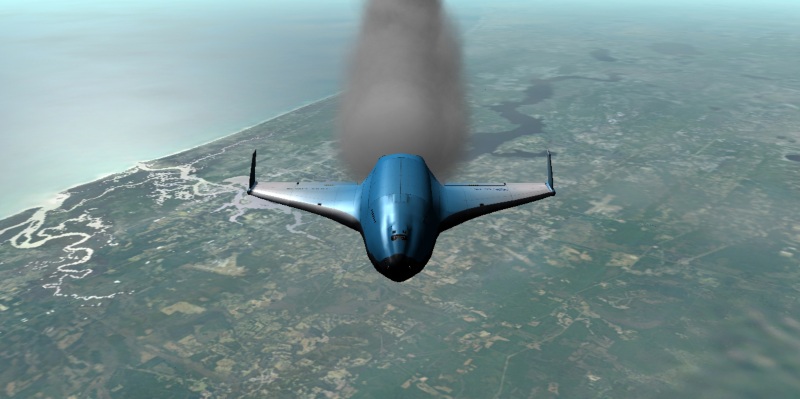Difference between revisions of "XR-5 Vanguard"
| Line 2: | Line 2: | ||
[[image:XR5 Atmospheric ascent.jpg|frame|none|An XR-5 ascending to orbit]] | [[image:XR5 Atmospheric ascent.jpg|frame|none|An XR-5 ascending to orbit]] | ||
| + | |||
| + | ==Design Concept== | ||
| + | |||
| + | The XR5 was designed as a single stage to orbit, reusable spaceplane able to carry up to 18 passengers and up to 432 metric tonnes of cargo to low Earth orbit. The exact design parameters for the XR5 are variable, depending on the preferences set by a user in the configuration file, but with realism settings set to their highest levels, the XR5 proves a difficult vessel to fly succesfully. Like the rest of the XR fleet, scramjet engines are typically used during the bulk of the ascent to orbit, providing orbital velocity in the high atmosphere before conventional rocket engines are used to provide the final orbital insertion above the altitude where the scramjet engines prove useful. | ||
Revision as of 19:44, 14 October 2012
The XR-5 Vanguard is a high-performance Spacecraft created for Orbiter by the Altea Aerospace team. The XR5's mesh was designed by Russel Hicks, texturing work done by PennyBlack, and payloads designed by Carmen A & Tom Fisher. Coding work to add multiple subsystems, failure modes, UMMU support, and Payload Management was done by Douglas Beachy, as with other vessels in the XR series. The initial 1.0c release came on April 20, 2008, and the most recent release was 1.8 on May 13, 2012.
Design Concept
The XR5 was designed as a single stage to orbit, reusable spaceplane able to carry up to 18 passengers and up to 432 metric tonnes of cargo to low Earth orbit. The exact design parameters for the XR5 are variable, depending on the preferences set by a user in the configuration file, but with realism settings set to their highest levels, the XR5 proves a difficult vessel to fly succesfully. Like the rest of the XR fleet, scramjet engines are typically used during the bulk of the ascent to orbit, providing orbital velocity in the high atmosphere before conventional rocket engines are used to provide the final orbital insertion above the altitude where the scramjet engines prove useful.
